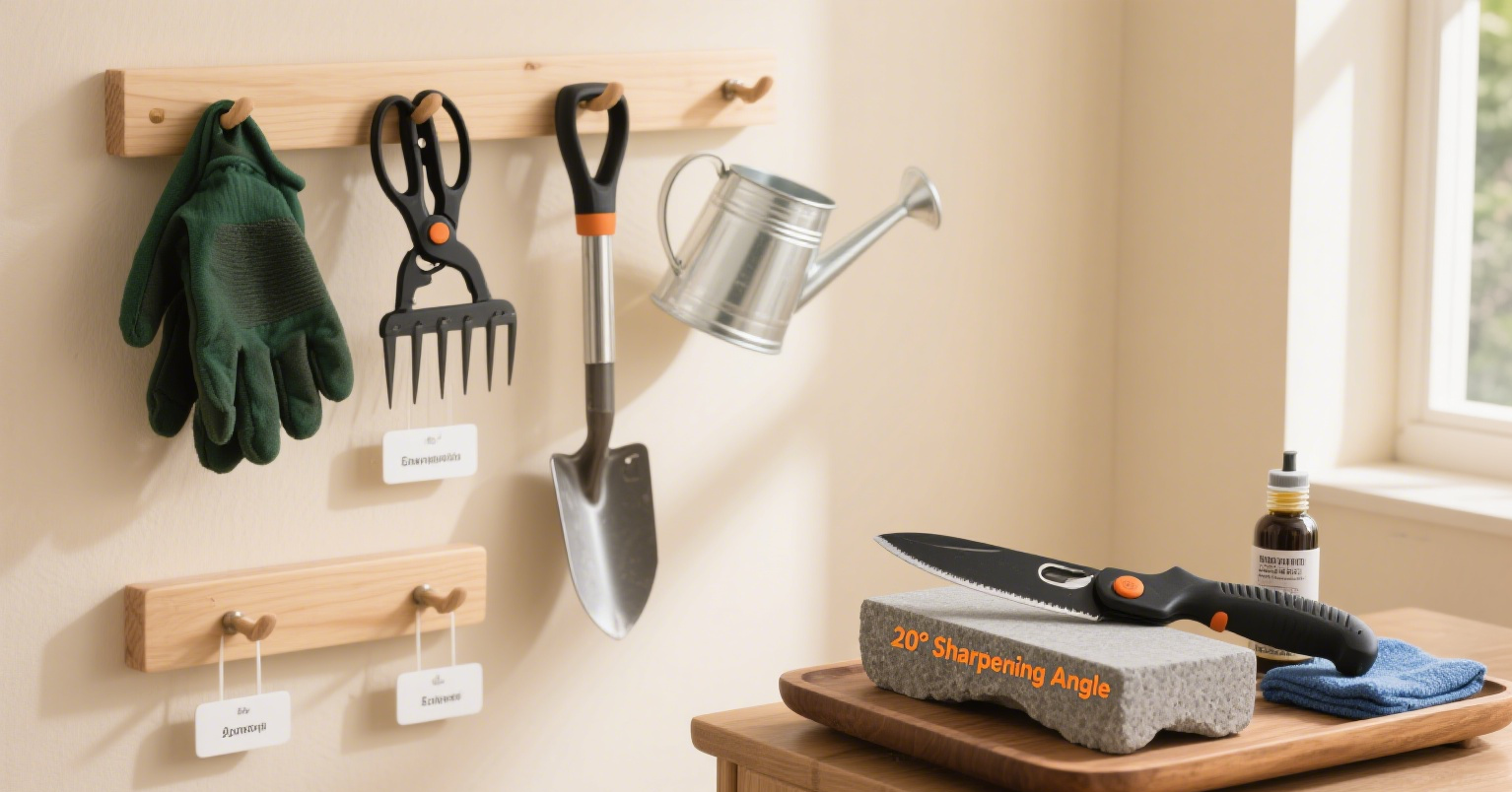Tools are an extension of a gardener’s hands. Choosing the right equipment turns gardening from a tiring chore into a pleasant experience. The following 5 essential tools cover all scenarios—planting, pruning, and maintenance. With proper usage tips, even beginners can easily care for their gardens.

1. Water-Resistant & Wear-Resistant Gardening Gloves
Core Function: Isolate soil, prevent pricks and scratches, and protect hands from thorns and chemicals.
For beginners, gloves with PU coating or rubber material are ideal. They are not only water-resistant and easy to clean but also have anti-slip patterns on the palms to enhance grip and prevent tools from slipping. Styles with long cuffs are more suitable for pruning thorny plants like roses.
Illustration Suggestion 1: A close-up of gloved hands holding moist soil, with rose thorns visible in the background to highlight protection.
Illustration Suggestion 2: A comparison chart of glove materials (cloth, leather, rubber-coated) with icons indicating their best uses—e.g., leather for thorns, rubber for chemicals .

2. Multi-Purpose Hand Trowel
Core Function: The "all-rounder" for turning soil, repotting plants, and sowing seeds.
Carbon steel trowels have high hardness, making them perfect for digging hard soil and weed roots—but they need to be cleaned and oiled immediately after use to prevent rust. Stainless steel versions are rust-resistant and easy to maintain, better for daily planting tasks. It’s recommended to have two sizes: a small one (5cm blade width) for potted plants and a large one (8cm blade width) for flower bed work.
Illustration Suggestion 1: A comparison image of two trowels (small and large) in use—one in a flower pot and the other in a flower bed—with labels for material differences.
Illustration Suggestion 2: A step-by-step diagram showing a trowel being dipped into oiled sand for cleaning and rust prevention .

3. Safety Pruning Shears
Core Function: Precisely trim branches to promote plant branching and blooming.
Choose models with a dual-trigger safety mechanism—you need to press both the safety button and the trigger to activate the blades, avoiding accidental injury. Manual shears are suitable for branches less than 1cm in diameter, while electric telescopic shears can easily reach high branches.
Illustration Suggestion 1: A close-up of rose branches being pruned, with the safety button highlighted in a dashed box.
Illustration Suggestion 2: A cutaway diagram of the safety mechanism, showing how the dual triggers prevent accidental activation .

4. Adjustable Leaf Rake
Core Function: Collect fallen leaves, level soil, and spread mulch.
Retractable rakes are highly recommended. When collapsed to 7 inches, they’re great for cleaning gaps in flower beds; when extended to 23 inches, they quickly clear large lawn areas. Metal tines are durable, while plastic tines are better for scratch-sensitive surfaces.
Illustration Suggestion 1: An image showing the rake head’s retraction and extension process, paired with a pile of fallen leaves.
Illustration Suggestion 2: A close-up comparison of metal vs. plastic tines, with annotations on durability and surface protection .

5. Long-Spout Watering Can
Core Function: Deliver water precisely to avoid wetting leaves (which can cause diseases).
A 2L capacity works for both indoor and outdoor use. The slim long spout reaches deep to plant roots, and the curved handle design reduces wrist fatigue during watering. Transparent bodies make it easy to check water levels, and models with detachable nozzles can switch to a spray mode.
Illustration Suggestion 1: A cross-sectional view showing water flowing from the spout directly to the roots of a potted plant, with volume markings labeled.
Illustration Suggestion 2: A split image of the watering can with detachable nozzle—one side showing the direct spout for roots, the other showing the spray nozzle for seedlings .
Tool Maintenance Tips
After each use, clean tools with warm water and soap, dry them, and apply anti-rust oil to metal parts. Turn gloves inside out to dry to prevent mildew. Regularly sharpen the blades of pruning shears with a whetstone to keep them sharp. Hang tools in a ventilated, dry place—this extends their lifespan and makes them easy to grab for next use.
Illustration Suggestion 1: A wall-mounted tool rack with labeled storage positions for all 5 tools.
Illustration Suggestion 2: A close-up of a whetstone sharpening pruning shear blades at the correct angle.
With these tools, garden care becomes efficient and effortless, leaving you more time to enjoy the therapeutic joy of gardening.

